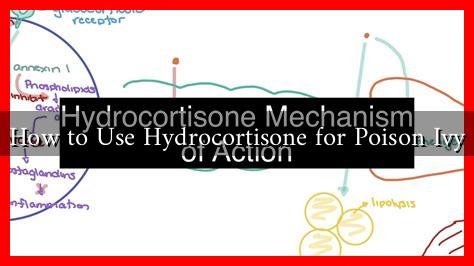-
Table of Contents
How to Use Hydrocortisone for Poison Ivy
Poison ivy is a common plant that can cause an itchy, uncomfortable rash for many people. The rash is a result of an allergic reaction to urushiol, an oil found in the leaves, stems, and roots of the plant. While there are various treatments available, hydrocortisone cream is one of the most effective options for alleviating the symptoms. This article will explore how to use hydrocortisone for poison ivy, its benefits, and important considerations.
Understanding Poison Ivy and Its Effects
Poison ivy (Toxicodendron radicans) is notorious for causing allergic reactions in sensitive individuals. The symptoms typically include:
- Itching
- Redness
- Swelling
- Bumps or blisters
According to the American Academy of Dermatology, about 85% of people are allergic to urushiol, making it a widespread issue during outdoor activities. The rash can appear within 12 to 72 hours after exposure and can last for several weeks if not treated properly.
What is Hydrocortisone?
Hydrocortisone is a topical corticosteroid that helps reduce inflammation, redness, and itching. It works by suppressing the immune response that causes these symptoms. Over-the-counter hydrocortisone creams typically contain 0.5% to 1% hydrocortisone, making them suitable for treating mild to moderate skin irritations, including poison ivy rashes.
How to Use Hydrocortisone for Poison Ivy
Using hydrocortisone cream effectively can significantly alleviate the discomfort associated with poison ivy. Here’s a step-by-step guide:
- Clean the Affected Area: Gently wash the area with soap and water to remove any residual urushiol. Pat the skin dry with a clean towel.
- Apply Hydrocortisone Cream: Take a small amount of hydrocortisone cream and apply it directly to the affected area. Use your fingertips to spread it evenly.
- Frequency of Application: Apply the cream 1 to 3 times a day, depending on the severity of the rash. Always follow the instructions on the product label.
- Wash Your Hands: After applying the cream, wash your hands thoroughly to avoid spreading the urushiol to other areas of your body or to other people.
- Monitor Your Symptoms: Keep an eye on the rash. If it worsens or does not improve after a week of treatment, consult a healthcare professional.
Benefits of Using Hydrocortisone for Poison Ivy
Hydrocortisone offers several advantages when treating poison ivy:
- Reduces Inflammation: It effectively decreases swelling and redness associated with the rash.
- Alleviates Itching: The cream provides quick relief from itching, allowing for better comfort and sleep.
- Easy to Use: Hydrocortisone cream is readily available over-the-counter and is simple to apply.
Precautions and Considerations
While hydrocortisone is generally safe for short-term use, there are some precautions to keep in mind:
- Avoid Overuse: Prolonged use can lead to skin thinning and other side effects. Limit use to no more than two weeks unless directed by a doctor.
- Consult a Doctor: If you have a severe reaction, such as widespread rash or difficulty breathing, seek medical attention immediately.
- Not for Open Wounds: Do not apply hydrocortisone to broken skin or open wounds.
Conclusion
Hydrocortisone cream is a valuable tool in managing the uncomfortable symptoms of poison ivy. By understanding how to use it effectively and being aware of its benefits and precautions, individuals can find relief from the distressing effects of this common plant. Always remember to consult a healthcare professional if symptoms persist or worsen. For more information on poison ivy and its treatment, you can visit the American Academy of Dermatology.


